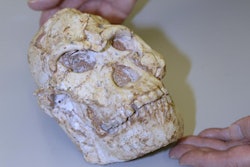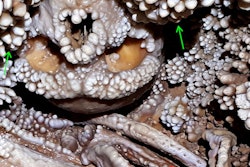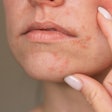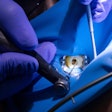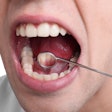Teeth are tattletales: They testify about a person’s health, their diet, and now smoking. Researchers from Northumbria University in Newcastle, England, have revealed evidence that smoking -- even if briefly -- leaves lasting marks on teeth.
Researchers made this discovery while trying to conclusively identify people who have perished in disasters or whose DNA is not contained in a DNA database, according to a university press release.
“This study shows, for the first time, the biological record of smoking-related oral health damage within the dental structure,” Valentina Perrone, PhD, one of the researchers who is now working as a research assistant at Leicester University, said in the release.
Cementum, one of the hard tissues that form teeth, develops rings, much like tree rings -- bands that form in a tree trunk that indicate its age and certain environmental conditions during its life.
Of 88 teeth they analyzed using cementochronology, a technology that analyzes cementum layers, the scientists were surprised to find disruptions -- variations in thickness and regularity -- in some teeth but not others. The researchers realized the disruptions corresponded with whether people were current or former smokers.
The team found damage in the teeth of 70% of ex-smokers and 33% of current smokers versus 3% in nonsmokers, the findings of which were published in PLOS One.
In the study, 46 people undergoing dental treatment that required tooth extraction donated 70 teeth and their medical and smoking histories. Additionally, the team compared the modern teeth against 18 teeth dating from 1776 to 1890. Among the older teeth, the researchers found evidence of smoking, including staining and notches in the teeth from pipe smoking.
![Top: Example of pipe notch (arrowed) [SK134130, St. James’ Gardens Burial Ground, Euston, London (Image reprinted from Davies-Barrett A., Inskip S. under a CC BY license, with permission from Manchester University Press, original copyright 2024)]. Bottom: Example of staining due to smoking [SK417, Holy Trinity Church, Coventry (Image reprinted from Davies-Barrett A., Inskip S. under a CC BY license, with permission from Manchester University Press, original copyright 2024)].](https://img.drbicuspid.com/mindful/smg/workspaces/default/uploads/2025/06/2025-07-03-smoking-tooth-effects.oMDPPanPMj.jpg?auto=format%2Ccompress&fit=max&q=70&w=400) Top: Example of pipe notch (arrowed) [SK134130, St. James’ Gardens Burial Ground, Euston, London (Image reprinted from Davies-Barrett A., Inskip S. under a CC BY license, with permission from Manchester University Press, original copyright 2024)]. Bottom: Example of staining due to smoking [SK417, Holy Trinity Church, Coventry (Image reprinted from Davies-Barrett A., Inskip S. under a CC BY license, with permission from Manchester University Press, original copyright 2024)].
Top: Example of pipe notch (arrowed) [SK134130, St. James’ Gardens Burial Ground, Euston, London (Image reprinted from Davies-Barrett A., Inskip S. under a CC BY license, with permission from Manchester University Press, original copyright 2024)]. Bottom: Example of staining due to smoking [SK417, Holy Trinity Church, Coventry (Image reprinted from Davies-Barrett A., Inskip S. under a CC BY license, with permission from Manchester University Press, original copyright 2024)].
Another intriguing finding was that cementum is thicker in ex-smokers than it is for nonsmokers or current smokers. Scientists posit the thickening happens when the cementum returns to normal levels after a person stops smoking.
Smoking cessation leaves a “stronger” deposit, or ring, on top of previous rings because it appears thicker compared to prior damaged layers. Nonsmokers and current smokers don’t experience this disruption, so their deposits appear uniform. Of the archeological dental remains, researchers noticed the same disruptions compared to the modern-day teeth from current or ex-smokers.
The authors acknowledged the study’s limitations, including that there may have been underlying tooth conditions that interfered with the data.
Despite the limitations, the research may be valuable for understanding human history and the future implications of smoking’s effect on health.
Sarah Inskip, PhD, a member of the team who leads the U.K.’s Tobacco, Health and History Project, said, “The identification of 'smoking damage' in archaeological teeth opens up further avenues to understand how the long-term consumption of tobacco in populations has affected our health through time.”





